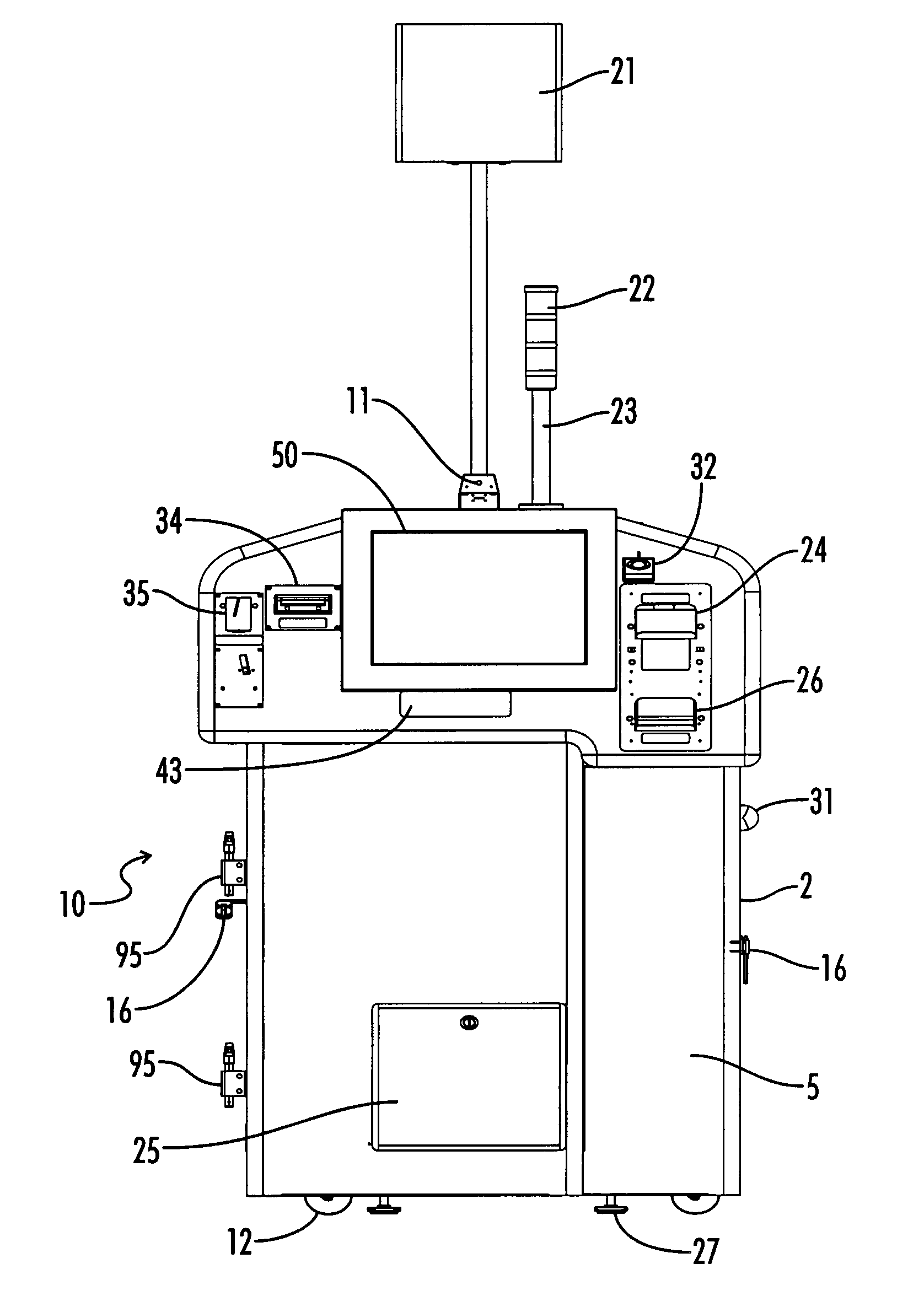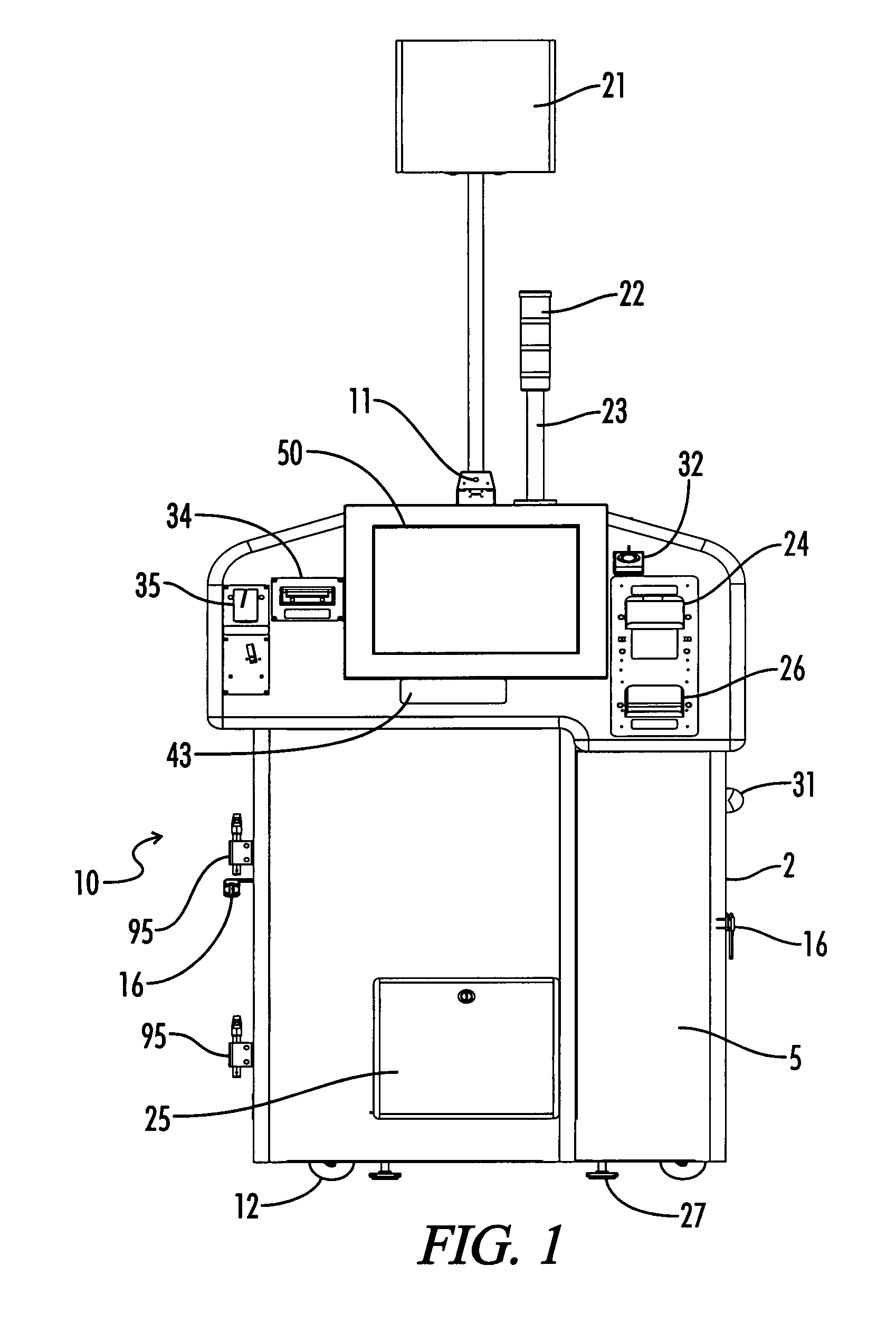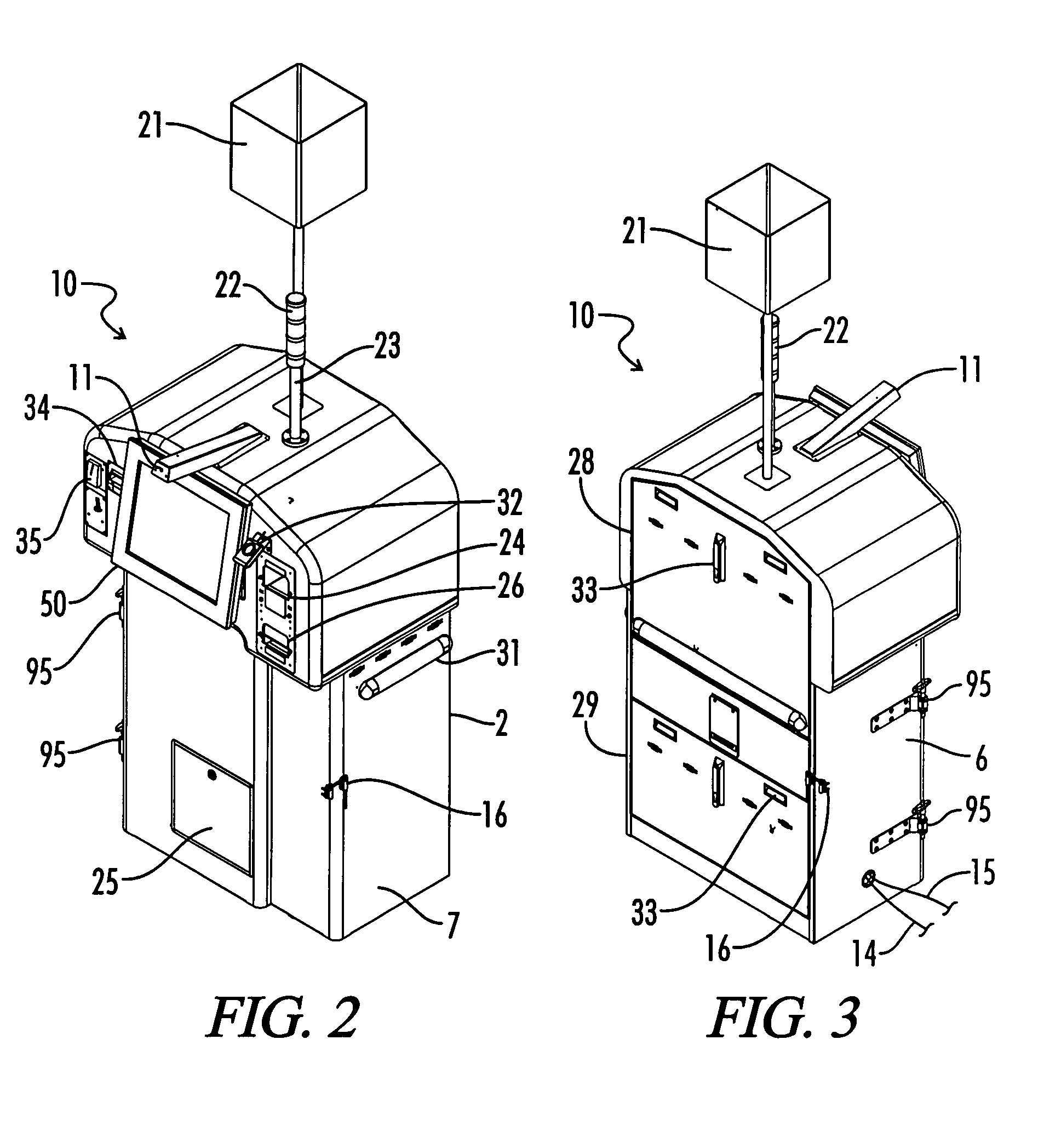Automated checkout unit and method of use thereof
- Summary
- Abstract
- Description
- Claims
- Application Information
AI Technical Summary
Benefits of technology
Problems solved by technology
Method used
Image
Examples
Embodiment Construction
[0041]The invention disclosed herein is a checkout module for checkout in a retail store, an embodiment of the invention including a cabinet, a video display, a hinge so that the module rotates and slides relative to a checkout lane, a latch for holding the module in one of two fixed positions, a payment accepting device, and a currency dispensing device. In certain embodiments, the checkout module also includes a remote security database which is accessed through VPN technology. Also, disclosed herein is a method of converting a conventional checkout lane to a self scan checkout lane. That method includes installing a receptacle, installing latch points, providing a checkout module, operably connecting the checkout module to the receptacle, and removably connecting the checkout module to the checkout lane. Finally, disclosed herein is a method of checking out a customer, including the customer touching a display screen, scanning items, a store employee using a handheld mobile termi...
PUM
 Login to View More
Login to View More Abstract
Description
Claims
Application Information
 Login to View More
Login to View More - R&D
- Intellectual Property
- Life Sciences
- Materials
- Tech Scout
- Unparalleled Data Quality
- Higher Quality Content
- 60% Fewer Hallucinations
Browse by: Latest US Patents, China's latest patents, Technical Efficacy Thesaurus, Application Domain, Technology Topic, Popular Technical Reports.
© 2025 PatSnap. All rights reserved.Legal|Privacy policy|Modern Slavery Act Transparency Statement|Sitemap|About US| Contact US: help@patsnap.com



